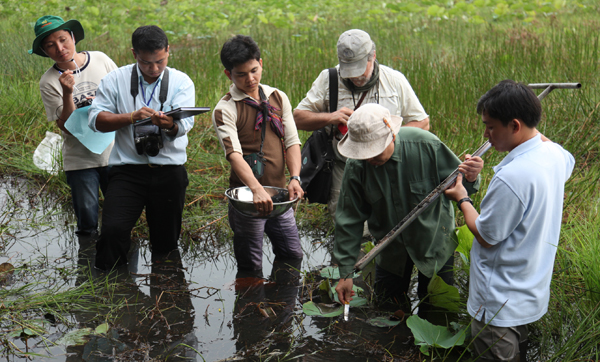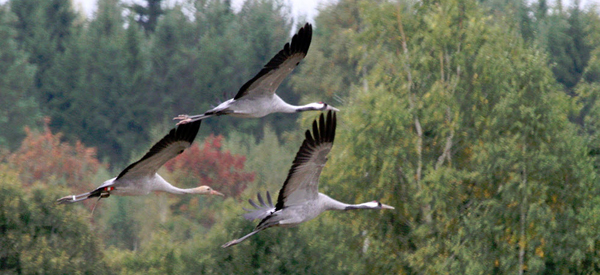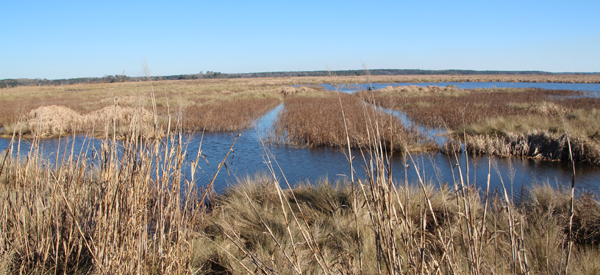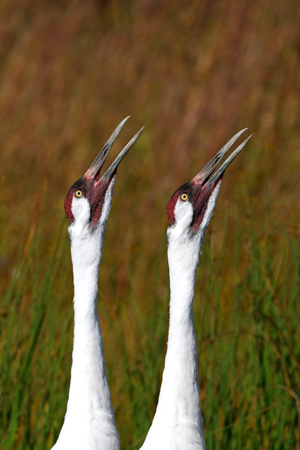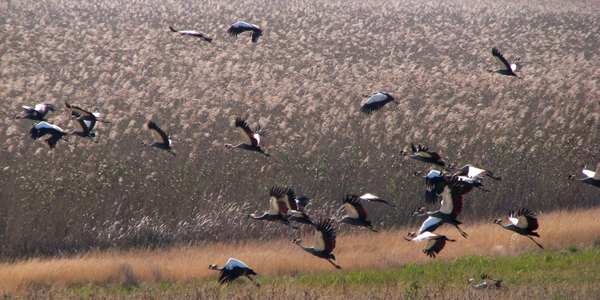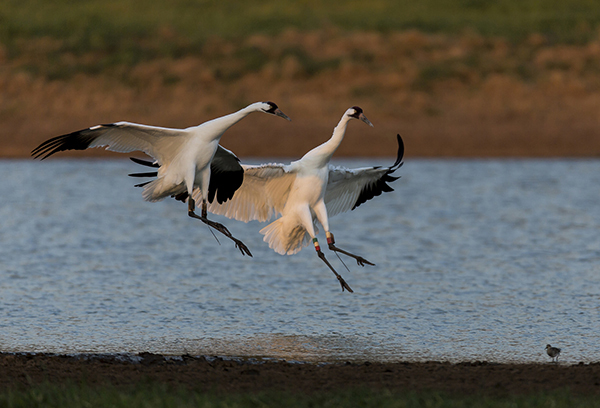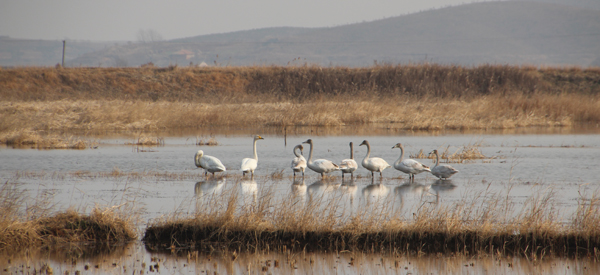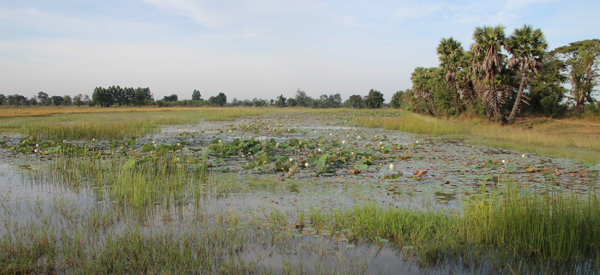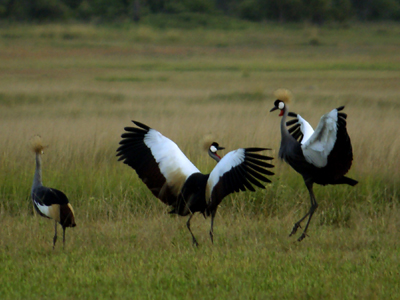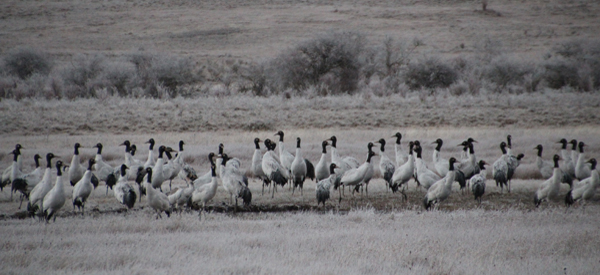
In July of 2010, the International Crane Foundation (ICF) was contacted by the US State Department with a request to survey Persistent Organic Pollutants (POPs) in the Mekong River Basin and to study the possible impact of POPs on human health and the environment.
Results for "❤️ Beste Dating-Site: www.Dating4Me.site ❤️ Leitfaden Für Weiße Männer Zur Datierung Einer Schwarzen Frau"
Eurasian Crane Completes Migration from Estonia to Ethiopia
 Researchers from the Estonian University of Life Sciences banded a juvenile Eurasian Cane in Estonia last summer. Their goal? To track the young crane on its first autumn migration and study the crane’s behavior and habitats used both during migration and on its wintering grounds.
Researchers from the Estonian University of Life Sciences banded a juvenile Eurasian Cane in Estonia last summer. Their goal? To track the young crane on its first autumn migration and study the crane’s behavior and habitats used both during migration and on its wintering grounds.
Travels with George: South Carolina 2014
 The ACE Basin encompasses 209,000 acres of wetlands where the Ashepoo, Combahee and Edisto rivers join in western South Carolina – the largest undeveloped estuary along the Atlantic Coast of the United Sates.
The ACE Basin encompasses 209,000 acres of wetlands where the Ashepoo, Combahee and Edisto rivers join in western South Carolina – the largest undeveloped estuary along the Atlantic Coast of the United Sates.
Whooping Cranes Need Your Voice
 The International Crane Foundation (ICF) is deeply concerned about the recent reports of Whooping Cranes being shot in Kentucky and Louisiana, adding to the frightening series of shootings of these highly endangered birds.
The International Crane Foundation (ICF) is deeply concerned about the recent reports of Whooping Cranes being shot in Kentucky and Louisiana, adding to the frightening series of shootings of these highly endangered birds.
Largest Protected Environment in South Africa Declared
 A major milestone for the conservation of South Africa’s grasslands was reached on January 22, 2014 when 60,230 ha of South Africa’s Lakes District, Chrissiesmeer, was proclaimed as a Protected Environment!
A major milestone for the conservation of South Africa’s grasslands was reached on January 22, 2014 when 60,230 ha of South Africa’s Lakes District, Chrissiesmeer, was proclaimed as a Protected Environment!
Travels with George: Florida 2014
 Late Sunday afternoon of January 5, 2014, while Baraboo was in the grips of an extremely cold winter, I had the privilege of meeting my friends and conservationists, Colin and Anne Phipps, near Tallahassee, Florida. We were waiting, in company with about 40 others, for a pair of Whooping Cranes to land beside a large pond in a cow pasture near balmy Tallahassee.
Late Sunday afternoon of January 5, 2014, while Baraboo was in the grips of an extremely cold winter, I had the privilege of meeting my friends and conservationists, Colin and Anne Phipps, near Tallahassee, Florida. We were waiting, in company with about 40 others, for a pair of Whooping Cranes to land beside a large pond in a cow pasture near balmy Tallahassee.
Travels with George: North Korea 2013
 In late November, I traveled to the Hermit Kingdom (the Democratic People’s Republic of Korea – DPRK) to provide ICF support for the work of my excellent colleagues at the State Academy of Sciences and the farmers at two important wintering sites for Red-crowned Cranes.
In late November, I traveled to the Hermit Kingdom (the Democratic People’s Republic of Korea – DPRK) to provide ICF support for the work of my excellent colleagues at the State Academy of Sciences and the farmers at two important wintering sites for Red-crowned Cranes.
Travels with George: Thailand Fall 2013
 Mid-morning, November 25, Thai colleagues and I are observing a pair of yearling Eastern Sarus Cranes digging and swallowing large sedge tubers from a harvested rice paddy near the Jorakae Non-hunting Area. To farmers, the sedges are weeds and thus killed by herbicides. So perhaps the cranes are, in a small way, helping the farmers. Suddenly an elderly man appeared riding a bicycle along the dirt road. His name was Mr. Nhu Pogang, and he has been a resident of this area for all of his 83 years. In his youth, the region was mostly forested with open wetlands in low-lying areas and cranes were common.
Mid-morning, November 25, Thai colleagues and I are observing a pair of yearling Eastern Sarus Cranes digging and swallowing large sedge tubers from a harvested rice paddy near the Jorakae Non-hunting Area. To farmers, the sedges are weeds and thus killed by herbicides. So perhaps the cranes are, in a small way, helping the farmers. Suddenly an elderly man appeared riding a bicycle along the dirt road. His name was Mr. Nhu Pogang, and he has been a resident of this area for all of his 83 years. In his youth, the region was mostly forested with open wetlands in low-lying areas and cranes were common.
The EWT and ICF Celebrate 40 Years of Saving Cranes and Communities
 The Endangered Wildlife Trust (EWT) and the International Crane Foundation (ICF), who have been cross-continental partners since 1994, both celebrated 40 years of pioneering conservation action in 2013. The EWT’s African Crane Conservation Programme (EWT-ACCP) and the ICF formalized their working arrangement in 2006, and since then the partnership has gone on to deliver real and positive impacts on the status of cranes and communities across the African continent.
The Endangered Wildlife Trust (EWT) and the International Crane Foundation (ICF), who have been cross-continental partners since 1994, both celebrated 40 years of pioneering conservation action in 2013. The EWT’s African Crane Conservation Programme (EWT-ACCP) and the ICF formalized their working arrangement in 2006, and since then the partnership has gone on to deliver real and positive impacts on the status of cranes and communities across the African continent.
Travels with George: Bhutan Fall 2013
 Since late October, the numbers of Black-necked Cranes in the Phobjika Valley, Bhutan have increased as more birds made their migration over the Himalayas. By November 11, the date of the Fourth King’s Birthday and of the Crane Festival within the courtyard of the Gangtey Gompa (16th century Buddhist temple), there were 262. When I returned on November 19, there were about 350, about 10 percent of which were juveniles, an indication that all is well on the breeding grounds in Tibet. More cranes are expected. Last winter the highest count in the valley was 368. This winter we hope the number exceeds 400!
Since late October, the numbers of Black-necked Cranes in the Phobjika Valley, Bhutan have increased as more birds made their migration over the Himalayas. By November 11, the date of the Fourth King’s Birthday and of the Crane Festival within the courtyard of the Gangtey Gompa (16th century Buddhist temple), there were 262. When I returned on November 19, there were about 350, about 10 percent of which were juveniles, an indication that all is well on the breeding grounds in Tibet. More cranes are expected. Last winter the highest count in the valley was 368. This winter we hope the number exceeds 400!

